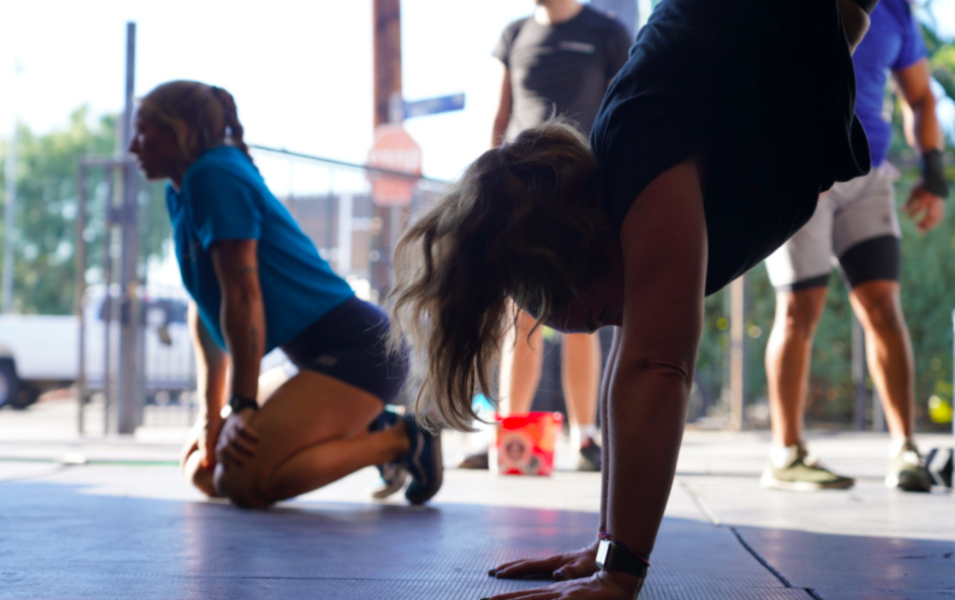
The strength and conditioning world is a vast ocean of methods, dogmas, practices, and trends. When taking a balcony view, however, of any training program different cycles emerge. A thoughtful program places the body in an environment of stress for a desired adaptation. This process of progressive overload is crucial for growth, but it’s not just about the physical stress placed on the body—it’s also about the environment you create to support that stress.
The right gear can make all the difference in how effectively you adapt to the challenges of your training. Whether it’s clothing that allows for full mobility during a heavy squat or a backpack that carries your essentials for a long day of training, having the right equipment ensures that the body is not only able to handle the stress of exercise but also recover and perform at its best. Built for Athletes understands the importance of this connection between performance and gear. Their line of training apparel is specifically designed to support athletes through every stage of their workout, from warm-up to cool-down. By using fabrics that stretch and move with the body, they reduce distractions and maximize comfort, allowing you to focus solely on the task at hand.
A well-fitting shirt, for example, won’t restrict your range of motion during overhead presses, while their durable, breathable fabrics keep you cool and dry during those intense training cycles. Built for Athletes ensures that your gear works as hard as you do, so you can push your limits and reach your fullest potential without being held back by subpar clothing or accessories.
That said, not all training adaptation is reduced to a day or a workout.
Here are the classic intervals in which programs are designed and executed:
Microcycles: Since no training day happens in isolation, training is often designed to fit together like puzzle pieces from day to day. There’s a reason we don’t bench press three days in a row, for example. The microcycle represents the smallest training unit possible. In most cases, this is a week of training that balances certain elements like loading, energy systems, movement patterns, etc.
Mesocycles: When one training day, say a squat day for example, corresponds with a training day the following week in a 4-6 week pattern a mesocycle emerges. A classic example of this is progressing the squat pattern for a training block that drives adaptation in for a month (or so) goal.
Macrocycles: The big picture of training is often described as the macrocycle with the most common interval being a year or a season. The macrocycle is inclusive of both distinct blocks (or mesocycles) and many small elements (or microcycles). This larger period often considers a ramp up of intensity as well as thoughtful recovery weeks.
Life Seasons: This isn’t in any sports science textbooks because I literally just made it up. Frankly, if you’re still reading this article and you aren’t a coach, kudos to you. I figured I would have lost you at “mesocycle”. In fact, most regular people don’t think of their training in a way that includes a thoughtful macrocycle because most of us don’t have a season-based life. That said, us regular folks do have life seasons, which means there will be periods of a time larger than one year where training will take on different forms and focuses. If we zoom out enough, I think an integrated human should be able to look across a lifetime and see large swaths of time where new movement practices take the forefront, while others are tabled. Learning to rock climb or taking five or six years to learn kickboxing is a life season.
So, by all means, dial in the microcycles. Drive adaptation from week to week with a method based mesocycle and look at the year with a macro view. However, I want to call the entire fitness industry to hold space for a 100-year approach. For a student of movement at that scale, you better bet there will be life seasons, too.
What does this life season of training include?
12/1/21 WOD
DEUCE ATHLETICS GPP
Complete 4 rounds for quality of:
5 Double Kneeling Landmine Press
8 Birddog Row(each)
Then complete the following for time:
1 6th Street Run
20 DB Squat Cleans(40/25)
20 Burpees
1 Bull Run
15 DB Squat Cleans
15 Burpees
1 7th Street Corner Run
10 DB Squat Cleans
10 Burpees
DEUCE GARAGE GPP
3-3-2-2-1-1
Push Jerks
Then, complete 3 rounds for quality of:
8 Single arm DB Z Press (ea)
10-12 Hollow Rocks
20 Alternating DB Plank Pull Throughs
Then, EMOM12
M1: 25 Double Unders
M2: 10 Slam Balls
M3: :30 Max DB Snatches (60/40)
400m Run

